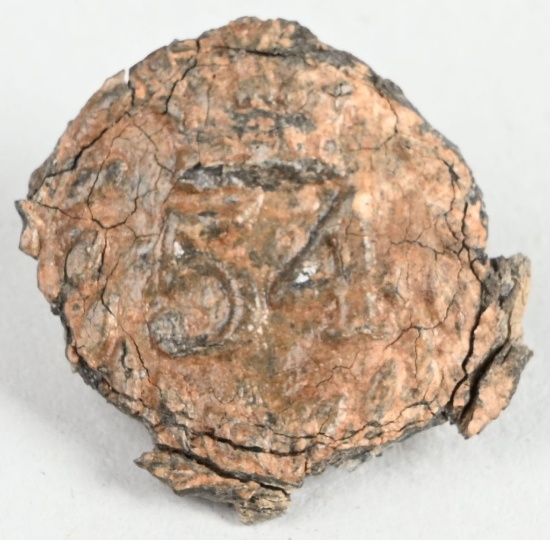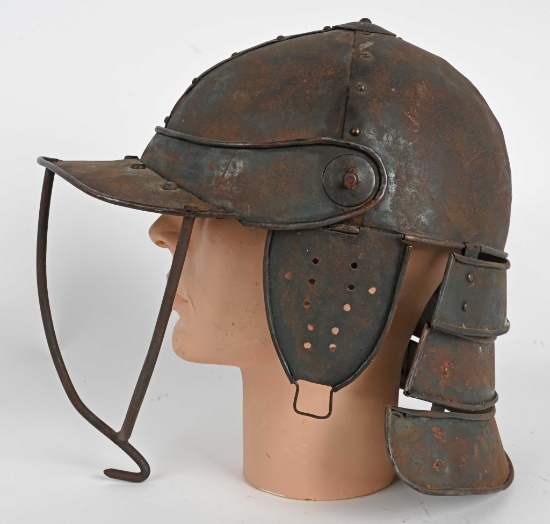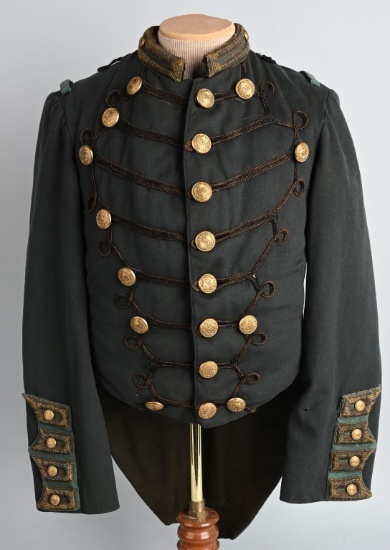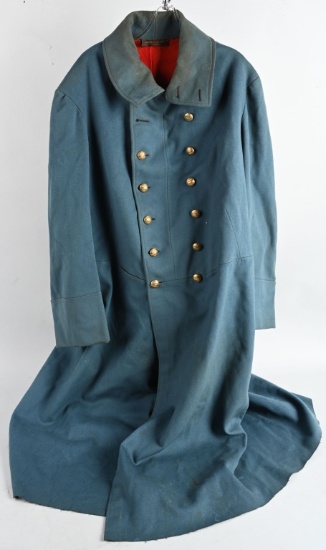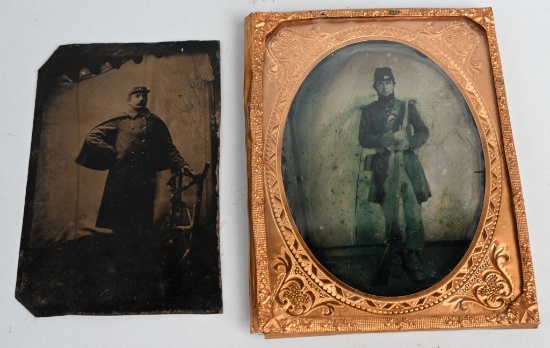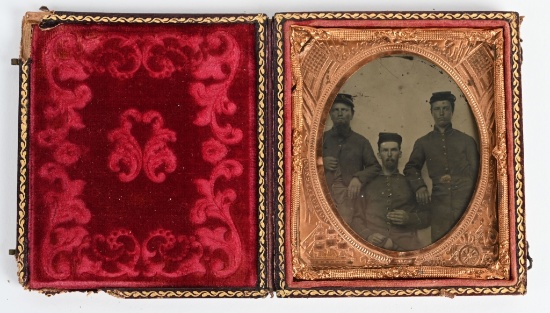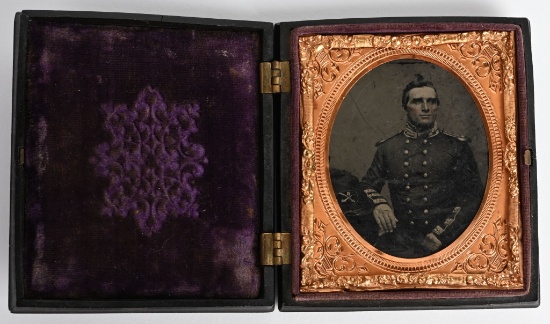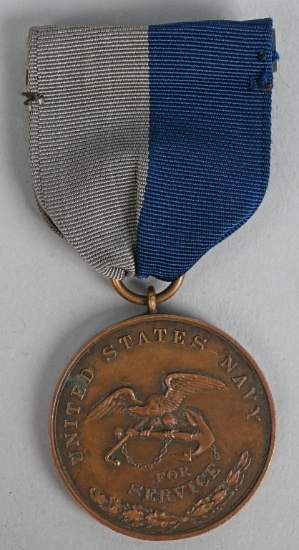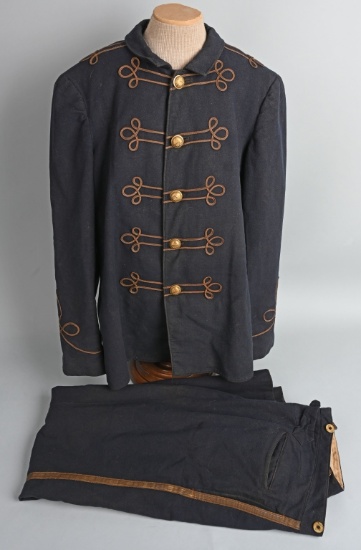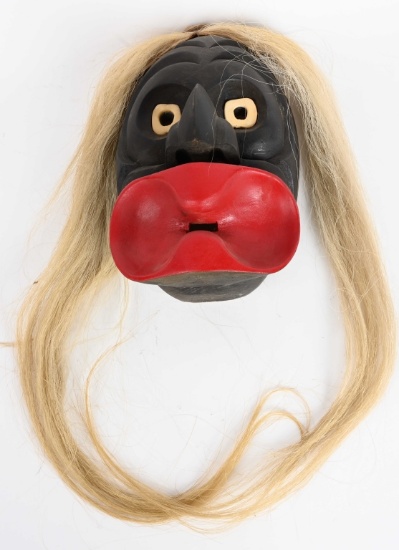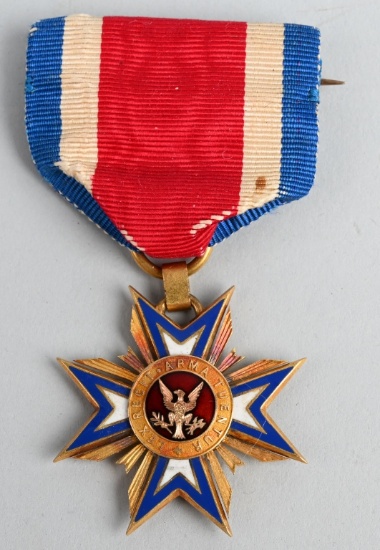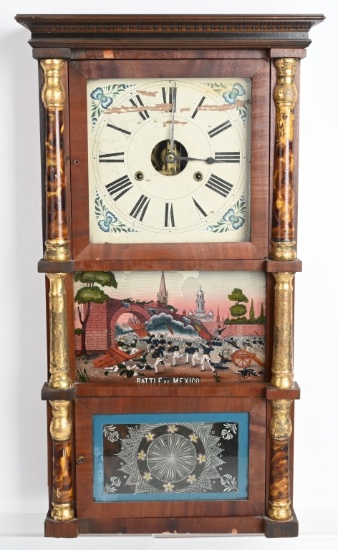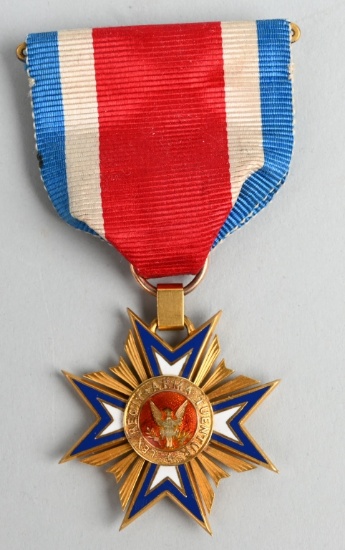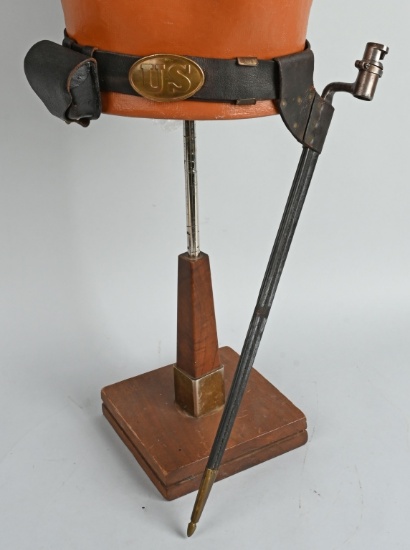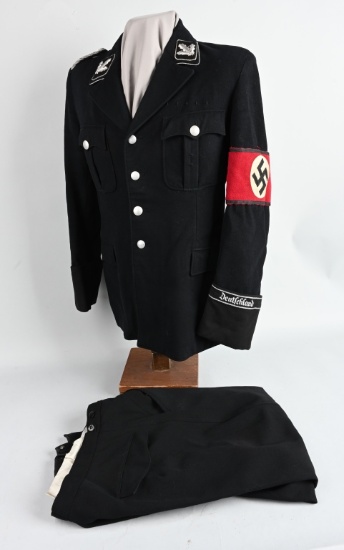
FALL PREMIER MILITARY AUCTION

FALL PREMIER MILITARY AUCTION
See Special Terms for additional fees
Cash Payment Discount: 3%
Description
PROUDLY PRESENTS
FALL PREMIER MILITARIA AUCTION
900 + LOTS OF MILITARY COLLECTIBLES FROM THE REVOLUTIONARY WAR TO MODERN TIMES. HIGHLIGHTS INCLUDE a 3 TIER BIRGE & PECK CLOCK WITH THE BATTLE OF MEXICO, CIVIL WAR SWORDS, IMAGES, ACCOUTREMENTS, and a ARMY OF THE CUMBERLAND GOLD CORPS BADGE; a HUGE COLLECTION OF IMPERIAL GERMAN VETERANS STEINS and PIPES; IMPERIAL AUSTRIAN KRIEGSMARINE SHIP BELL, WW1 and WW2 US GROUPINGS, EDGED WEAPONS, MEDALS, FLAGS, UNIFORMS, INSIGNIA, PATRIOTIC POSTERS and MORE. 400+ LOTS of WW2 NAZI GERMAN ITEMS INCLUDING a WAFFEN SS FIELD CAP, a GERMAN POLICE PANZER TYPE II WRAPPER, A NAZI TRUMPET FLAG with EAGLE, HELMETS, UNIFORMS, SWORDS, BAYONETS, ACCOUTREMENTS and MUCH MUCH MORE. JAPANESE KATANA SWORDS and POLE ARMS, VIETNAM ITEMS and MORE!!
SATURDAY OCTOBER 10th 2020
10:00 AM
"FULL CATALOG & LIVE BIDDING AVAILABLE THRU"
WWW.MILESTONEAUCTIONS.COM LIVEAUCTIONEERS, PROXIBID, & INVALUABLE
PHONE BIDS & ABSENTEE BIDS Call... Show more Show Less
Cash Payment Discount: 3%
Participation Requirements: Valid Credit Card required for bidding approval
Payment Options: Visa, MasterCard, Discover, American Express, Check, Money Order, and Wire Transfer
Visa MasterCard Discover American Express
Payment Instructions: SALES TAX All buyers will pay applicable state sales tax. Sales Tax will be charged unless the item is being shipped out of state or the buyer provides a current state exemption form. PAYMENT All merchandise must be paid in full within ten (10) days of the date of the sale. Purchases totaling $20,000 or more must be paid within three (3) days of the date of the sale. Call 440-527-8060 to pay your invoice by phone or mail payment to: 38198 Willoughby Parkway, Willoughby Ohio, 44094. Absentee bids placed through www.milestoneauctions.com and Proxibid.com will be auto charged to the credit card entered 48 hours after the end of the sale. If you wish to pay by another method please contact us within 48 hours after the sale. We accept Visa, MasterCard, Discover, personal checks/ certified checks, wire transfer, money orders, and cash. CREDIT CARD - For first time buyers and credit card charges greater than $2,500.00 buyers must complete the bottom portion of the invoice and must specifically sign the acknowledgement of our terms of sale before we will accept payment via credit card. We do offer the convenience of paying automatically by credit card. If you wish have your card automatically charged for all purchases please complete our Authorization for Automatic Credit Card Use. We have this form available upon request. Split payments are subject to a 23% buyers premium if a credit card is used as any form of total payment. CHECK - There will be a $30.00 service charge for returned checks. Make checks payable to: Milestone Auctions LLC. Milestone Auctions reserves the right to hold items paid for by personal or company check until said check clears (14 days). Milestone Auctions has the right to hold all checks over $2,000.00. Customers who have an established successful buying history with Milestone Auctions may be exempt from this. In the few situations where a successful bidder does not remit payment when due, Milestone Auctions will proceed with the legal steps necessary to protect its interests and will block the bidder from future auction participation.
Currency Type: USD
Shipping Instructions: Please see our terms and conditions.
Preview Date & Times: Items are available for preview 7 days prior to the sale by appointment. Auction day preview is October 10th at 8AM.
Checkout Date & Times: Please contact the auction company for checkout dates & times.
Location: 38198 Willoughby Parkway, Willoughby, OH 44094
Driving Directions:

By clicking "Confirm Buy" you are agreeing to the terms of the sale. Instant Purchase items may have additional fees such as an Internet Premium, Sales Tax, Shipping or other fees not included in the Instant Purchase price. Please see Auction Information for full details.
Payment Type:
REV WAR BRITISH IDed WATER COLOR 2ND REGT DRAGOONS
Lot # 1 (Sale Order: 1 of 952)
118th CENTURY BRITISH 54th UNIFORM BUTTON WAR 1812
Lot # 1a (Sale Order: 2 of 952)
EARLY ENGLISH CIVIL WAR CAVALRY ZISCHAGGE HELMET
Lot # 1b (Sale Order: 3 of 952)
CIVIL WAR ID'ED CAPTAIN STRAPS INSIGNIA BUTTONS
Lot # 2 (Sale Order: 4 of 952)
INDIAN WARS NEW YORK MILITIA TAIL COAT COATEE
Lot # 2a (Sale Order: 5 of 952)
EARLY 19th C. MILITIA PRESENTATION SWORD ENGRAVED
Lot # 3 (Sale Order: 6 of 952)
INDIAN WARS SKY BLUE OVERCOAT BY BROOKS BROTHERS
Lot # 3a (Sale Order: 7 of 952)
CIVIL WAR MEDICAL STAFF OFFICERS SWORD & SCABBARD
Lot # 4 (Sale Order: 8 of 952)
CIVIL WAR IMAGE LOT ARMED AMBROTYPE TINTYPE
Lot # 4a (Sale Order: 9 of 952)
CIVIL WAR 1/6 TINTYPE 3 UNION SOLDIERS w/ CASE
Lot # 4b (Sale Order: 10 of 952)
CIVIL WAR 1/6 RUBY AMBROTYPE CAVALRY OFFICER
Lot # 4c (Sale Order: 11 of 952)
LATE 19th CENTURY NCO SWORD & SCABBARD
Lot # 5 (Sale Order: 12 of 952)
CIVIL WAR USA & CSA FAMILY PHOTOS CDV AND LETTERS
Lot # 5a (Sale Order: 13 of 952)
CIVIL WAR NAVY CAMPAIGN MEDAL NUMBERED 1518 ON RIM
Lot # 5b (Sale Order: 14 of 952)
CIVIL WAR MILITIA KNIGHT'S HEAD SWORD BY AMES
Lot # 6 (Sale Order: 15 of 952)
INDIAN WARS NEW HAMPSHIRE STATE MILITIA UNIFORM
Lot # 6a (Sale Order: 16 of 952)
IROQUOIS SPOONMOUTH FACE MASK ARTIST NAMED
Lot # 6b (Sale Order: 17 of 952)
MEXICAN WAR STAFF SWORD w/ INDIAN PRINCESS POMMEL
Lot # 7 (Sale Order: 18 of 952)
CIVIL WAR MOLLUS MEDAL 34TH OVI PIATT'S ZOUAVES
Lot # 7a (Sale Order: 19 of 952)
MEXICAN WAR BIRGE, PECK CLOCK BATTLE OF MEXICO
Lot # 7b (Sale Order: 20 of 952)
PETITION REINSTATE DR. TO PRESIDENT ANDREW JOHNSON
Lot # 8 (Sale Order: 21 of 952)
CIVIL WAR MOLLUS MEDAL 6TH MICHIGAN CAVALRY CAPT.
Lot # 8a (Sale Order: 22 of 952)
CIVIL WAR ARMY OF THE CUMBERLAND GOLD CORPS BADGE
Lot # 9 (Sale Order: 23 of 952)
MOLLUS MEDAL GENERAL SEMINOLE MEXICAN & CIVIL WAR
Lot # 9a (Sale Order: 24 of 952)
CIVIL WAR EM BELT & US PLATE BAYONET & CAP BOX
Lot # 9b (Sale Order: 25 of 952)
| Bid Range | Increment |
| $0.00 - $299.99 | $10.00 |
| $300.00 - $999.99 | $25.00 |
| $1,000.00 - $1,999.99 | $50.00 |
| $2,000.00 - $4,999.99 | $100.00 |
| $5,000.00 - $9,999.99 | $250.00 |
| $10,000.00 - $24,999.99 | $500.00 |
| $25,000.00 - $49,999.99 | $1,000.00 |
| $50,000.00 - $99,999.99 | $2,500.00 |
| $100,000.00+ | $5,000.00 |

 x Cancel
x Cancel
